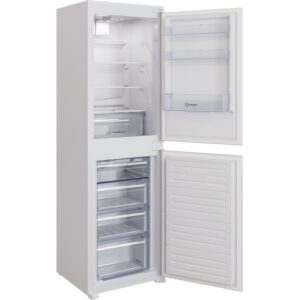
Refrigerators help slow the growth of pathogens while not completely eliminating food spoilage, so it is crucial that consumers know when their food has gone bad so it can be safely thrown out.
Food safety guidelines help to ensure food is safe to consume throughout its supply chain from farm, processing, distribution and retail display. They serve to safeguard consumers against illness due to eating contaminated products.
Temperature Control
Refrigeration is an effective method for controlling microbial growth in perishable foods. Food safety guidelines based on scientific data aim to prevent foodborne illness; and whether refrigerated storage is needed depends on its microflora composition, processing temperature requirements (baking, roasting or HTST sterilization), distribution/sales temperature abuse potential and vulnerability to pathogen growth which causes disease or produces toxins – factors which often determine whether raw meat, fish and poultry products as well as dairy products need refrigeration storage as well as prepared foods like salads and sauces need refrigeration storage conditions.
One of the most important ways you can protect yourself is to ensure you have access to safe foods. In order to do this, it is imperative that you continuously monitor and regulate the temperatures in your refrigerator at all times – specifically between 40-140 degrees Fahrenheit which is considered the “temperature danger zone”, where bacteria rapidly grow. It is in this zone that harmful microorganisms that spoil food may produce toxins which cause disease or even cause death in humans – hence why digital monitoring and management solutions provide us with easy solutions for keeping all items stored at their ideal temperatures all the time.
Detergents
Most refrigerators feature thermostatic control systems to maintain constant temperatures, yet household refrigerators often show significant temperature differences and may not maintain accurate storage, transport and food handling temperatures. Furthermore, many of these refrigerators may harbor pathogens like Salmonella monocytogenes or Listeria monocytogenes which can lead to illnesses in humans.
Refrigerators must be regularly inspected to ensure optimal operation and cleanliness. Both the fridge and freezer should be emptied out, cleaned with mild liquid detergent (dishwashing soap or specially designed appliance cleaner) and dusted/linted from dust/lint particles that build up, to allow proper air circulation without overheating the refrigeration system. Likewise, condensers should also be blown out using an appliance-specific hose in order to clear away blockages as well as any accumulations of ice/frost from within.
To reduce cross-contamination risks, it is best to store raw meats and fish below cooked foods and perishables away from canned goods in their own compartment of the fridge. Containers should be securely sealed using foil, plastic wrap or storage bags so as to avoid leaks; additionally it is highly recommended that every refrigerator contain an appliance thermometer to monitor internal temperatures and ensure correct operation.
Storage Space
Refrigerators protect food from pathogens and spoilage bacteria while also maintaining its eating qualities. Improper storage may result in lost nutritional value and flavor as well as contamination from harmful microorganisms or spoilage substances released during storage processes.
Refrigerators’ cold temperatures help curb bacterial growth. Pathogens exist naturally in our environment, and when exposed to food, moisture, and favorable temperatures they thrive rapidly and contaminate foods with unpleasant flavors, textures, or aromas that lead to spoilage. Refrigeration safeguards against this by keeping foods below the temperature danger zone.
Refrigerant techniques use dark, dry storage areas to extend the shelf life of food products. This prevents light from reaching their containers and oxygen from degrading their quality; plus refrigerated storage helps preserve vitamins A, D, K and E that would otherwise break down in sunlight.
Refrigerators should be organized to prevent food contamination, while making it easier for people to locate needed products quickly. Foods requiring high temperature for cooking (raw meat and fish) should go on lower shelves while ready-to-eat items (fruit, vegetables and salad) should go higher up on shelves; this organization prevents cross-contamination as items move around during search.
Cleanliness
An unclean refrigerator can harbor foodborne pathogens that spoil food and increase the risk of illness, as microorganisms thrive under various conditions – high temperature, improper storage and unhygienic surroundings all help promote their growth and spread rapidly. Signs that foods have gone bad include off-odors, slimy surfaces on meats and loss of color in foods – these could indicate that they are too old to consume safely, potentially leading to health complications in their own right.
Store food in sealed containers or on a plate pan for maximum cleanliness in your fridge. This prevents food from coming in contact with each other and keeps raw food from contaminating cooked meals, protecting both interiors of refrigerators as well as keeping away odors.
Modern refrigerators often include separate drawers for fruits, vegetables and meats to reduce cross-contamination risk while helping each item reach its optimum temperature more quickly.
Food thermometers are essential in each refrigerator and freezer to monitor their temperatures accurately, and may be found at department, appliance, culinary, or grocery stores. To make them easier to read, refrigerator and freezer thermometers should be placed near the front of each fridge or on kitchen countertops where they can easily be seen – they may also help monitor conditions such as ice crystal formation or freezing temperatures in a freezer.



